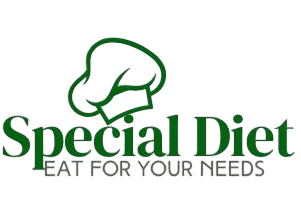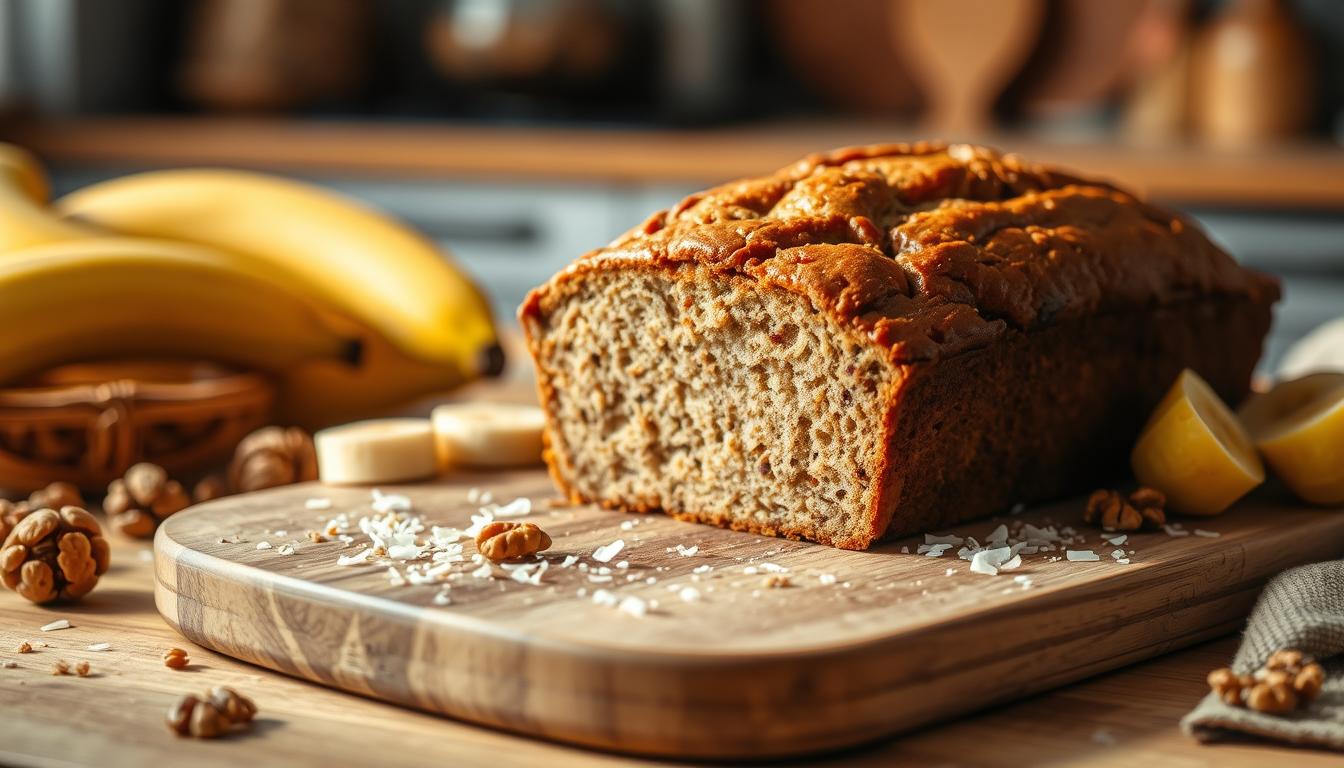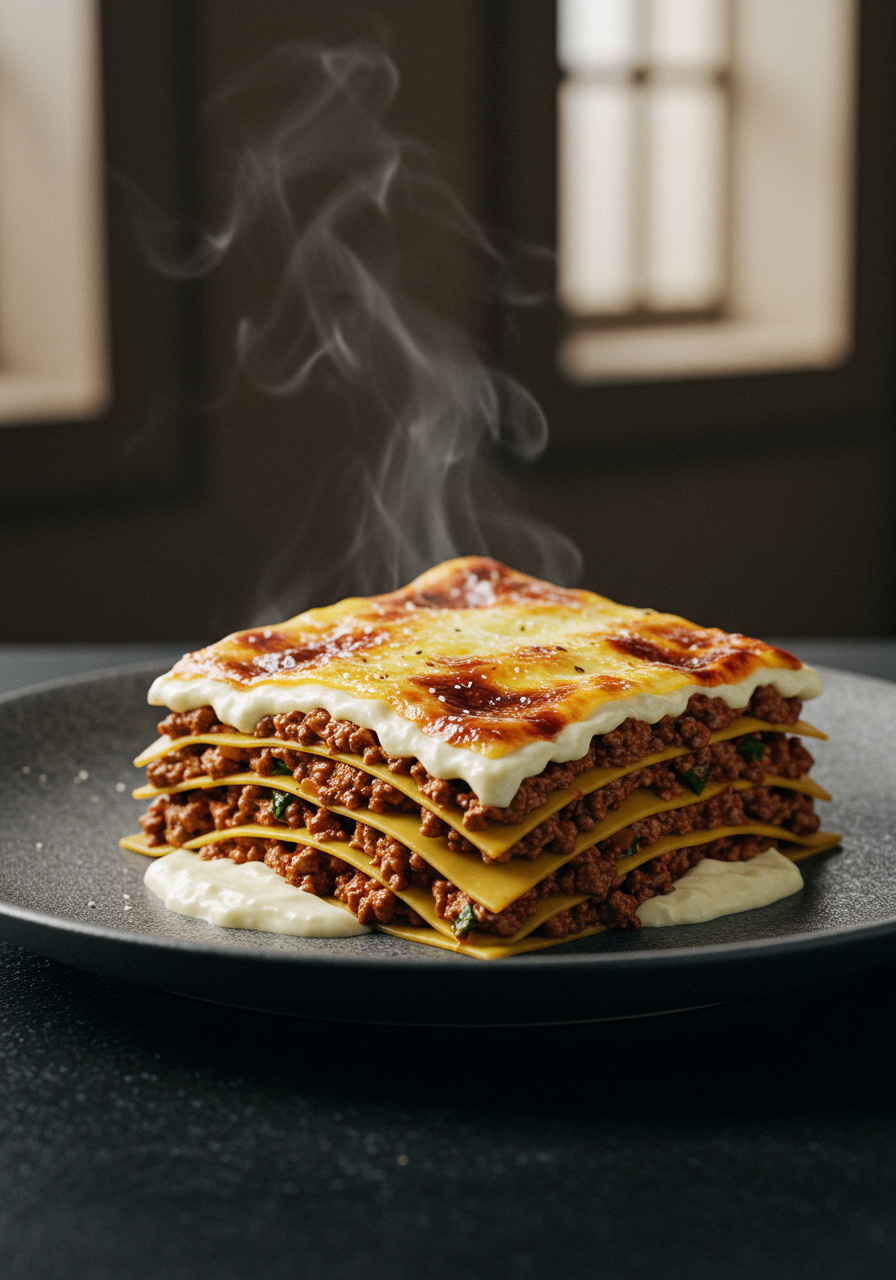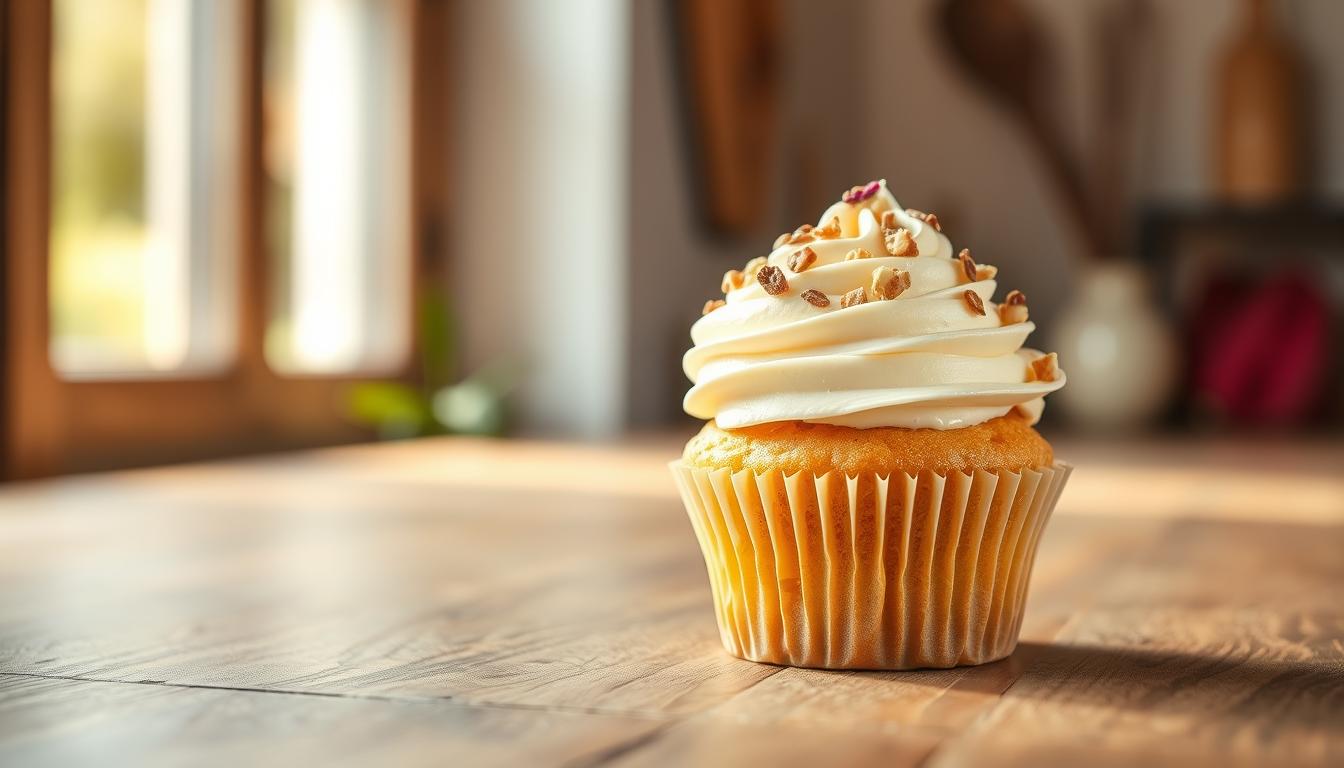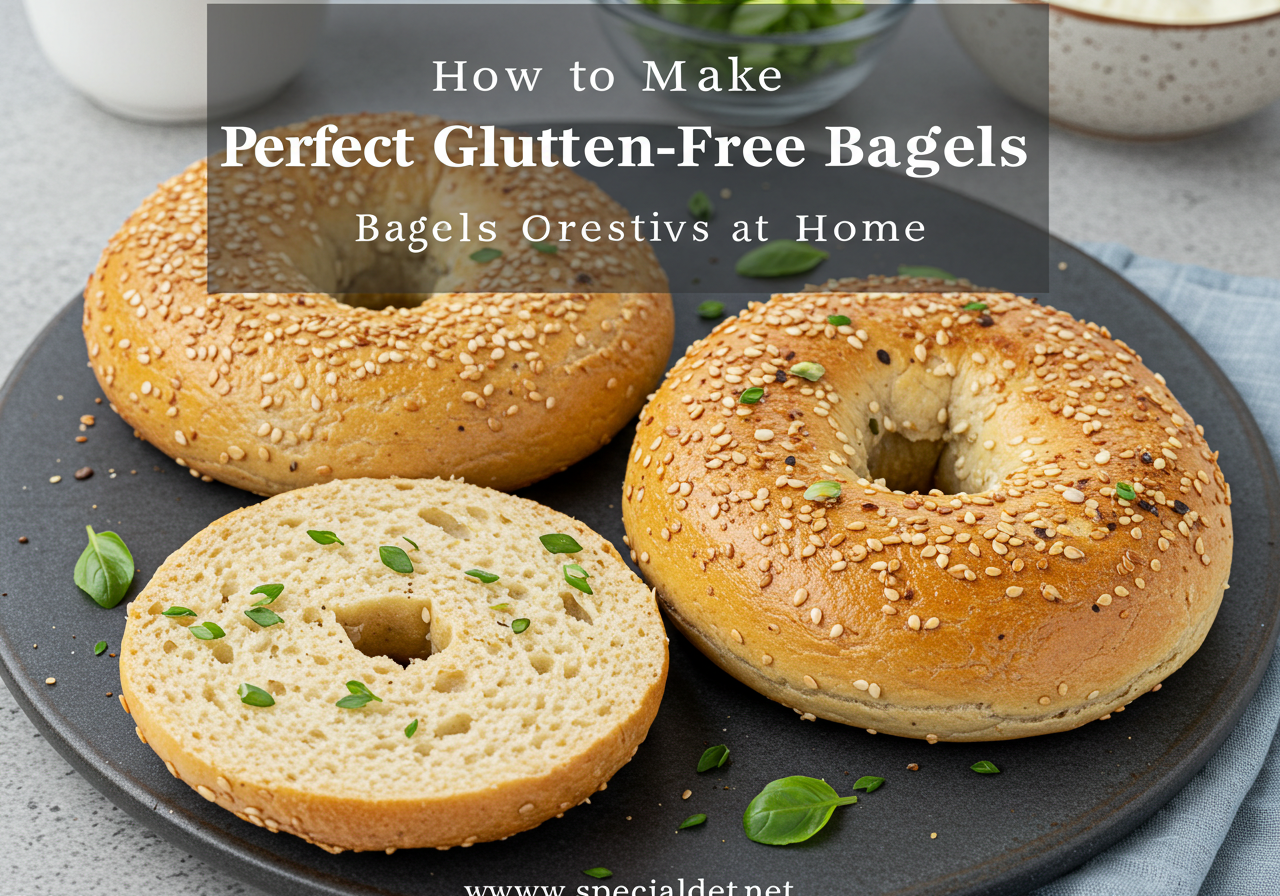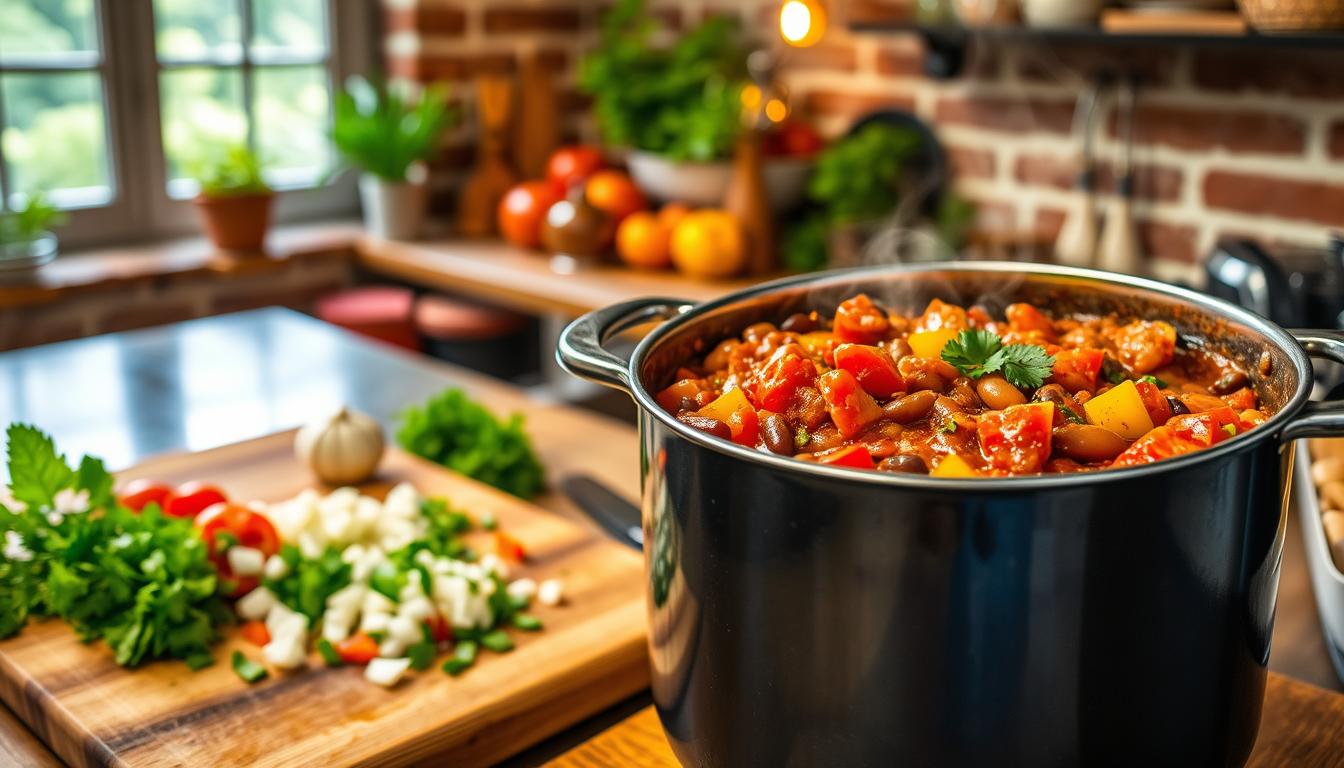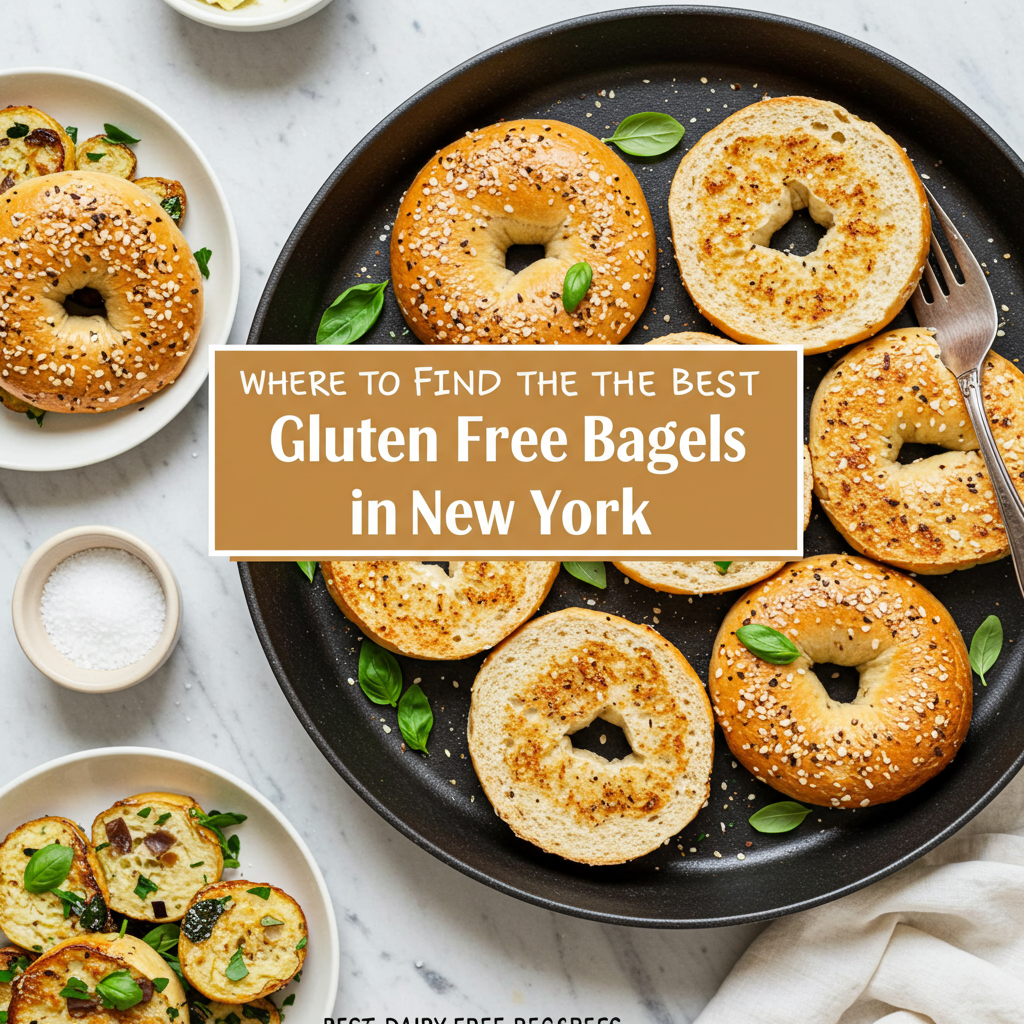Easy Vegan Gluten-Free Banana Bread Recipe for Everyone
Welcome to our comprehensive guide on making a delicious vegan gluten-free banana bread. This recipe is perfect for those with dietary restrictions or preferences, offering a moist and flavorful loaf that’s easy to make.
You’ll learn about the benefits of using plant-based ingredients and how to choose the right gluten-free flour blend. By following this recipe, you’ll be able to enjoy a tasty banana bread that fits your dietary needs.
Key Takeaways
- Easy-to-follow recipe for vegan gluten-free banana bread
- Benefits of using plant-based ingredients in baking
- Tips for choosing the right gluten-free flour blend
- A delicious and moist banana bread suitable for dietary restrictions
- Simple ingredients and preparation steps
Table of Contents
The Rise of Vegan Gluten-Free Baking
The world of baking is witnessing a significant shift towards vegan gluten-free practices. You’re likely noticing more people around you adopting these dietary preferences, and it’s changing the way bakeries and recipes cater to various needs.
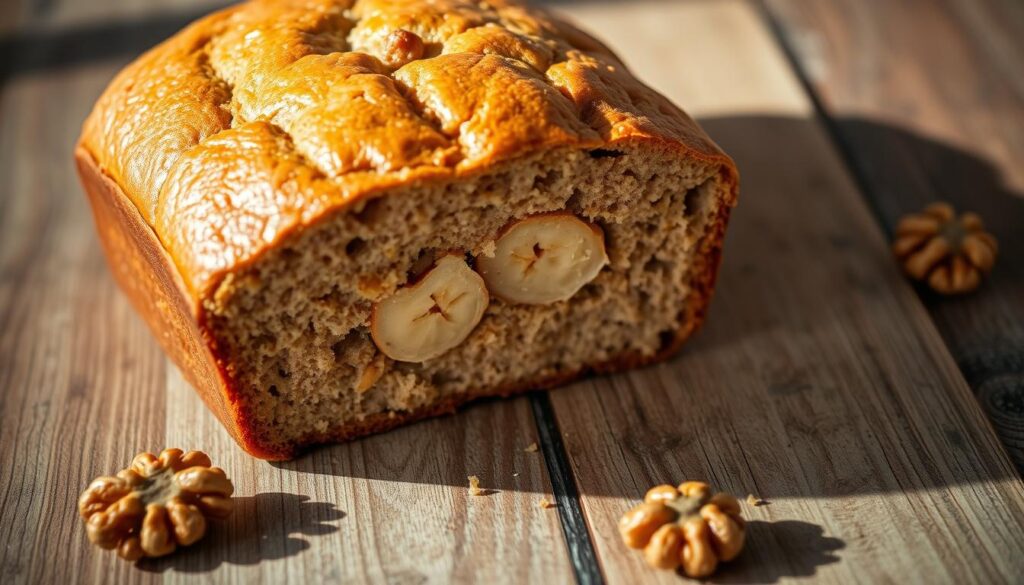
Why More People Are Choosing Plant-Based Diets
You might be wondering why plant-based diets are becoming so popular. The reasons are multifaceted, ranging from health benefits to environmental concerns. People are choosing plant-based diets for various reasons, including reducing animal cruelty, improving their health, and lowering their carbon footprint.
Plant-based diets are rich in fruits, vegetables, and whole grains, which can lead to improved overall health. You’re likely to see a reduction in chronic diseases such as heart disease and diabetes when following a well-planned plant-based diet.
Understanding Gluten Sensitivity and Celiac Disease
You’re not alone if you’ve heard of gluten sensitivity and celiac disease. These conditions are becoming increasingly common, and understanding them is crucial for creating baked goods that cater to these needs. Gluten sensitivity refers to a condition where individuals experience symptoms similar to celiac disease but without the same level of immune system activation.
| Condition | Description | Symptoms |
|---|---|---|
| Celiac Disease | An autoimmune disorder causing the immune system to react to gluten | Diarrhea, fatigue, weight loss |
| Gluten Sensitivity | A condition where individuals experience symptoms similar to celiac disease without the immune system activation | Bloating, abdominal pain, diarrhea |
Benefits of Making Vegan Gluten-Free Banana Bread
Vegan gluten-free banana bread offers a multitude of benefits, from health advantages to environmental benefits. By opting for this type of baking, you’re making a choice that positively impacts both your health and the planet.
Health Advantages of Plant-Based Ingredients
Using plant-based ingredients in your banana bread not only caters to vegan dietary preferences but also provides several health benefits. These ingredients are typically rich in fiber, vitamins, and minerals, contributing to a healthier digestive system and overall well-being. For instance, bananas are a great source of potassium, an essential mineral for maintaining healthy blood pressure.
Why This Recipe Works for Multiple Dietary Needs
This vegan gluten-free banana bread recipe is designed to be inclusive of various dietary requirements. It’s perfect for those with gluten intolerance or sensitivity, as well as for vegans. The use of gluten-free flours and plant-based milk alternatives ensures that the bread is accessible to a wide range of consumers. The table below highlights how this recipe caters to different dietary needs.
| Dietary Need | How the Recipe Caters to It |
|---|---|
| Gluten-Free | Uses gluten-free flour blend |
| Vegan | Employs plant-based milk and egg alternatives |
| Dairy-Free | Utilizes dairy-free milk alternatives |
Environmental Impact of Plant-Based Baking
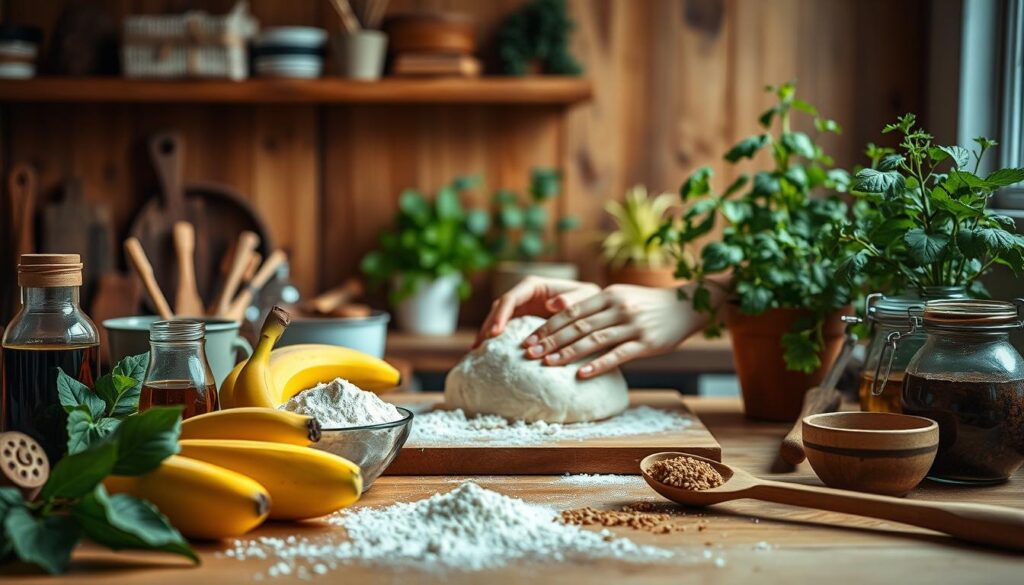
Choosing plant-based ingredients for your banana bread has a positive environmental impact. Animal agriculture is a significant contributor to greenhouse gas emissions, deforestation, and water pollution. By opting for plant-based ingredients, you’re reducing your carbon footprint and supporting more sustainable agriculture.
Moreover, plant-based baking often involves using locally sourced and organic ingredients, further reducing the environmental impact. As consumers become more environmentally conscious, choosing vegan gluten-free options like banana bread is a simple yet effective way to make a difference.
Essential Ingredients for Vegan Gluten-Free Banana Bread
To make a moist and flavorful vegan gluten-free banana bread, you need to choose your ingredients carefully. The right combination of ingredients not only ensures that your banana bread is delicious but also caters to various dietary needs and preferences.
Choosing the Right Gluten-Free Flour Blend
Selecting a suitable gluten-free flour blend is crucial for the texture and structure of your banana bread. Common gluten-free flours include almond flour, coconut flour, and rice flour. A blend that combines these flours can provide a better texture and flavor. For instance, a mix of 2 parts rice flour, 1 part almond flour, and 1 part coconut flour can be a good starting point.
| Flour Type | Characteristics | Proportion |
|---|---|---|
| Rice Flour | Light, neutral flavor | 2 parts |
| Almond Flour | Nutty flavor, dense | 1 part |
| Coconut Flour | Absorbent, slightly sweet | 1 part |
Plant-Based Binding Agents
Since traditional baking often relies on eggs for binding, vegan baking requires alternative binding agents. Options include flaxseed meal mixed with water, chia seeds, and applesauce. These ingredients help hold your banana bread together, ensuring it doesn’t crumble.
Using Flaxseed Meal as a Binding Agent: Mix 1 tablespoon of ground flaxseed with 3 tablespoons of water to replace one egg. Let it sit for a few minutes to thicken before adding it to your recipe.
Selecting and Preparing Perfect Bananas
The ripeness of your bananas significantly affects the flavor and texture of your banana bread. Choose bananas that are ripe or overripe for the best results. Overripe bananas are sweeter and blend into the batter more smoothly.
Tip: Freeze bananas that are too ripe to use later in your banana bread recipe. Simply thaw them when you’re ready to bake.
Natural Sweeteners and Flavor Enhancers
Instead of using refined sugars, consider natural sweeteners like maple syrup, coconut sugar, or dates. These not only add sweetness but also bring unique flavors to your banana bread. Additionally, spices like cinnamon, nutmeg, or vanilla extract can enhance the flavor profile.
Balancing Flavors: Start with a small amount of sweetener and spice, then adjust to taste. Remember, the riper your bananas, the less additional sweetener you’ll need.
Kitchen Equipment You’ll Need
The right equipment can make all the difference in creating a delicious homemade vegan bread. To ensure your vegan gluten-free banana bread turns out perfectly, you’ll need to have the right tools in your kitchen.
Essential Tools for Banana Bread Success
To start, you’ll need a few essential tools. A 9×5-inch loaf pan is crucial for shaping your banana bread. Make sure it’s made of a material that’s safe for non-stick coatings if you’re using one. A mixing bowl set is also necessary for combining your ingredients. You’ll need separate bowls for mixing dry and wet ingredients before combining them.
Other essential tools include a rubber spatula for scraping the sides of your bowls, a whisk for mixing wet ingredients, and a measuring cup set for accurately measuring your ingredients.
| Tool | Purpose |
|---|---|
| 9×5-inch Loaf Pan | Shapes the banana bread |
| Mixing Bowl Set | Combines dry and wet ingredients |
| Rubber Spatula | Scrapes the sides of bowls |
Preventing Cross-Contamination for Truly Gluten-Free Results
If you’re baking for someone with gluten intolerance or sensitivity, it’s crucial to prevent cross-contamination. Use dedicated gluten-free utensils and ensure your workspace is clean and free from gluten-containing flour.
The Ultimate Vegan Gluten Free Banana Bread Recipe
With this ultimate vegan gluten-free banana bread recipe, you’ll be able to make a tasty loaf that’s perfect for any occasion. This recipe is designed to be easy to follow and yields a deliciously moist banana bread that’s free from gluten and animal products.
Preparing Your Ingredients and Equipment
Before you start mixing, it’s essential to prepare your ingredients and equipment. Ensure you have ripe bananas, as they are crucial for the bread’s flavor and texture. You’ll also need gluten-free flour, a binding agent like flaxseed, and other ingredients like coconut sugar and non-dairy milk.
Gather your kitchen equipment, including a mixing bowl, a loaf pan, and a measuring scale. Make sure all your equipment is clean and dry to prevent any cross-contamination, especially if you’re using a shared kitchen space for gluten-free baking.
Mixing the Dry Ingredients
In a large bowl, combine your dry ingredients, including gluten-free flour, coconut sugar, and any other dry ingredients specified in the recipe. Whisk them together thoroughly to ensure even distribution.
Combining Wet Ingredients
In a separate bowl, mix your wet ingredients, such as mashed bananas, non-dairy milk, and any other liquid ingredients. Ensure the bananas are well-mashed and the mixture is smooth.
Bringing Everything Together
Combine the wet and dry ingredients, mixing until you achieve a smooth batter. Be careful not to overmix, as this can result in a dense loaf.
Baking to Perfection
Pour the batter into your prepared loaf pan and bake in a preheated oven. The baking time will depend on your oven and the size of your loaf pan, so keep an eye on it to avoid overcooking.
Cooling and Serving
Once baked, remove the banana bread from the oven and let it cool in the pan for a few minutes. Then, transfer it to a wire rack to cool completely. This step is crucial for achieving the right texture.
| Ingredient | Quantity | Purpose |
|---|---|---|
| Gluten-free flour | 2 cups | Provides structure |
| Ripe bananas | 3 | Adds moisture and flavor |
| Coconut sugar | 1/2 cup | Natural sweetener |
By following this recipe and the steps outlined, you’ll be able to create a delicious vegan gluten-free banana bread that’s perfect for sharing or enjoying on your own. This recipe is not only a treat for those with dietary restrictions but also a healthy alternative to traditional banana bread recipes.
Troubleshooting Common Issues
Even with a great vegan gluten-free banana bread recipe, things can sometimes go wrong. Don’t worry, we’ve got the solutions to common problems you might encounter.
Why Your Banana Bread Might Be Too Dense
A dense banana bread can be disappointing. This issue often arises from overmixing the batter or using too much flour. To avoid this, gently fold your wet and dry ingredients together until just combined. Also, be precise with your measurements, as excess flour can make your bread dense.
Another reason for density could be insufficient leavening. Make sure you’re using the right amount of baking powder or baking soda as specified in your recipe. If you’re at high altitude, you might need to adjust these quantities further.
Solving Crumbly Texture Problems
Crumbly texture in banana bread can be due to inadequate binding. In vegan baking, this is often addressed by using flax or chia eggs. Ensure you’re using the correct ratio of ground flax or chia to water and that you’ve allowed it to gel properly before adding it to your mix.
Another culprit could be the type of gluten-free flour blend you’re using. Some blends work better than others. Consider using a blend that contains xanthan gum or guar gum, which help with texture and binding.
Adjusting for Different Altitudes and Climates
Baking at high altitudes or in different climates can affect your banana bread’s texture and consistency. At high altitudes, you may need to adjust your leavening agents, reduce sugar, and increase liquid content. In humid climates, you might need to slightly reduce the liquid or increase the flour.
| Altitude | Adjustment Needed |
|---|---|
| High Altitude (>3,000 ft) | Reduce leavening, increase liquid |
| Low Altitude ( | No adjustments needed |
| Humid Climate | Reduce liquid, increase flour slightly |
By understanding and addressing these common issues, you’ll be well on your way to baking perfect vegan gluten-free banana bread every time.
Creative Variations and Delicious Add-ins
Take your vegan gluten-free banana bread to the next level with creative add-ins and variations. The versatility of banana bread allows you to experiment with numerous ingredients, creating a new experience with each bake.
Chocolate and Fruit Additions
Adding chocolate chips or chunks can transform your healthy banana bread into a decadent treat. Consider using dairy-free chocolate to maintain the vegan integrity. Fresh or dried fruits like cranberries, blueberries, or cherries can add natural sweetness and flavor bursts.
- Dairy-free chocolate chips
- Dried cranberries
- Fresh blueberries
Nut and Seed Options
Nuts and seeds not only add texture but also boost the nutritional value of your dairy-free banana bread. Walnuts, almonds, and pecans are popular choices, while chia seeds and flaxseeds provide an extra dose of omega-3 fatty acids.
- Walnuts for a classic flavor
- Almonds for crunch
- Chia seeds for added nutrition
Spice Combinations to Enhance Flavor
Spices can dramatically change the flavor profile of your healthy banana bread. Cinnamon and nutmeg are warm and comforting, while ginger adds a zesty twist. Experiment with different combinations to find your perfect blend.
- Cinnamon and nutmeg for warmth
- Ginger for a spicy kick
- Cardamom for a unique flavor
Creating Seasonal Versions
Make your banana bread seasonal by incorporating ingredients relevant to the time of year. Pumpkin puree in fall or lemon zest in spring can give your bread a timely twist.
- Pumpkin puree for fall
- Lemon zest for spring
- Cranberries for winter
Savory Banana Bread Alternatives
Not all banana bread needs to be sweet. Experiment with savory ingredients like herbs, garlic, or olives to create a bread that’s perfect for accompanying soups or salads.
- Rosemary and garlic for a savory loaf
- Olives for a salty twist
By incorporating these creative variations and add-ins, you can keep your vegan gluten-free banana bread exciting and tailored to any occasion or season.
Nutritional Benefits and Serving Suggestions
Your vegan gluten-free banana bread is not only delicious but also offers numerous health benefits. This treat is a great way to incorporate essential nutrients into your diet while satisfying your sweet tooth.
Key Nutrients in Your Vegan Gluten-Free Loaf
The bananas in your bread provide a rich source of potassium, an essential mineral for maintaining healthy blood pressure and promoting bone health. The gluten-free flours used, such as almond or coconut flour, contribute healthy fats and protein. Additionally, using vegan ingredients ensures that your banana bread is free from animal products, making it suitable for those following a plant-based diet.
Creative Ways to Serve Your Banana Bread
You can enjoy your vegan gluten-free banana bread in various ways. Try toasting a slice and topping it with almond butter or vegan cream cheese for a delicious breakfast. You can also crumble it into smaller pieces and use it as a topping for oatmeal or yogurt. For a special treat, serve it warm with a scoop of vegan ice cream.
Making It Part of a Balanced Diet
To incorporate your vegan gluten-free banana bread into a balanced diet, consider pairing it with other nutrient-dense foods. For example, have a slice with a side of fresh fruit or a handful of nuts for a satisfying snack. You can also use it as a base for a healthy dessert by topping it with fresh berries and a drizzle of maple syrup.
From Kitchen to Table: Storing, Sharing and Enjoying Your Homemade Creation
Now that you’ve baked your delicious homemade vegan bread, it’s time to enjoy the fruits of your labor. Proper storage is key to keeping your gluten-free desserts fresh for a longer period. Store your banana bread in an airtight container at room temperature for up to three days or freeze it for up to two months.
When you’re ready to share your creation with friends and family, consider wrapping individual slices in plastic wrap or aluminum foil and placing them in a decorative tin or basket. This makes for a thoughtful and delicious gift that’s perfect for any occasion. You can also use your homemade vegan bread to make creative desserts, such as bread pudding or French toast.
By following these simple tips, you’ll be able to enjoy your homemade vegan gluten-free banana bread for days to come and share the joy with those around you. Whether you’re serving it as a snack or dessert, your homemade bread is sure to be a hit.
